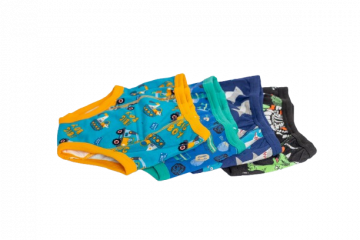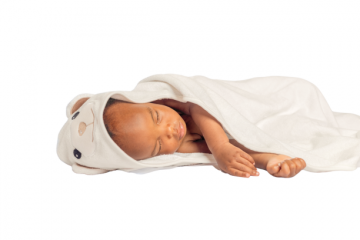
Introduction
Few milestones in life measure up to potty training. Why, the human child is generally the hardest to learn in the animal kingdom! The answer? Good timing.
It takes some 6 months to complete potty training, which ends when most toddlers are 36 months old. Girls are experts here, perhaps because they can imitate mom better than boys, who complete training 2 months behind.
Introduction & Exploration
It all starts with a little patience – and one step at a time. Patiently invite the child to explore toilet chores either bare (with no diapers) or with a potty chair. Below are a few critical steps to follow:
- Start early. As soon as the child can speak at around 15 months, train it with such bathroom words as “pee” and “loo” in connection with hygiene. When potty training comes, these words will turn practical for them.
- Tutor your child upon waking up how to remove diapers before urinating. Tell them they need not wear them anymore. It is even better if there is a newborn in the house, to let the child know only newborns need diapers.
- At 21 months of age, your tot can aspire to a potty chair. You can encourage this aspiration by staging the potty chair either in the usual play area or in the toilet itself.
- Continue teaching the child how to use the potty chair properly. Does he squirm? Show him to squat. Does she swing? Show her how to stay balanced over the plastic seat.
- Every napping time, ask the kid to go to the toilet. You can even put a potty in one of the adult toilets and accompany the child each night to sit on it. Make it a habit to go to the toilet before sleep time even when the child has no pee. It prepares them psychologically.
- In the early stages of training, keeping the child bare-bottom in the house is quite encouraging. Later, you can make them wear pull-up diapers in the house and show them how to remove them when feeling an urge to pee.
- As soon as you see the kid is getting there, dress them in loose clothing with no buttons during the day. These are easy to remove when the urge comes. But just in case, stay ready with wipes at hand in case of an accidental soiling.
Transition from Diapers to Training Underwear
Now, when your tot has made it past the potty stage, it’s time to transition them from diapers to training panties. Wearing underwear is in fact as big a milestone for kids as potty training as a whole.
Timing tip: at 36 months, remove the child completely from diapers. Only leave pull-up diapers for night use. Luckily, night potty training rarely happens until the child is 4 to 6 because this is when children can no longer remain dry through the night.
But is that toddler ready for that transition? Ask yourself these questions:
- Is my child interested at all in toilets?
- Is this kid increasingly showing discomfort in soiled diapers?
If the answer for both question are yes, now it’s time to go with the child shopping for training pants. Most types are pullable, unlike regular underwear. They work perfectly for a child who’s been using cloth diapers all along.
Tip: make the child feel the true owner of the training pants by giving them freedom to decorate them. This ownership feel motivates the kid to take care of the panties at toilet time. It also helps make the toilet experience welcome.
Only later can you move to regular underwear, i.e. after age 4 onward.
Designated Toilet Times/Routines
Train the child to go to the toilet at a set hour during the training pants’ phase. Make it seem like fun going to sit on the potty. You can even clap for them with each success.
- Set specific toilet breaks on the potty. The best-tried timings are after meals and before sleep. These are durations when the child’s bladder craves much release.
- Create a potty time reward system. Rewarding successful potty times encourages children to nurture a positive attitude towards toilets. Clap for them, offer them stickers or sing to them each time they do it successfully.
Mistakes tip: one mistake parents make when creating designate toilet routines is that they forget wiping training. In their eagerness to earn their potty time reward, children may even forget to wipe themselves. Therefore begin by demonstrating to the child to clean their private parts each toilet break. Also train them to wash hands every time they soil themselves, to kill germs.
Positive Reinforcement and Motivation
If at 36 months, your child is still toilet-shy, use other positive reinforcements. Make them raise self-esteem with encouraging words. Use positive attitude tactics such as:
- Put the child on a potty with what they like best. A book of pictures, a pair of dolls…anything to keep them busy on the toilet seat. This sense of being busy raises their esteem and makes them enjoy potty routines.
But:
- In case your child hits 2.5 years and is still avoiding toilet training, seek a professional trainer.
- Ask the child often if they need to go to toilet lest they hold back stool thinking they are observing hygiene!
Nighttime Training
Once the child has been through 6 near-perfect months of potty training, nighttime training can start. Most parents choose to begin around 4 years of age. By this time:
- Your child has had mostly dry most nights.
- He or she does not pee too frequently.
- Your baby child has also learned to remove their pull-up diapers or training underwear each morning.
Nighttime training differs from one toddler to another. If your child wakes consistently with their pull-up diapers dry most of the time, then nighttime training is quite easy. It is time to ease the child off diapers and switch to normal underwear. If the child wakes up with their pull-up diapers or training pants wet but warm, meaning they do it just before waking, nighttime training can start a little later.
- Start nighttime training by making the child sleep bare to promote toilet readiness. Without clothing, the child will rush to the loo and be back in no time.
- Bring the potty to the child’s room to reduce sleep disruption. A close by potty will discourage the need to call mommy at night.
- Finally, cut off fluids at night to reduce accidents!
Consistency & Patience
Understanding, consistency and patience can help a parent withstand unsuccessful potty training. Why, some 5-year-olds can still continue soiling themselves even after potty training!
By motivation we mean:
Be available day and night. Even wake up nights to change pull-up diapers to make the child appreciate the need for toilet.
So, the maternity journey is a long one. But with the right functional wear for moms, essentials for babies and the proper baby care/training guidance, it is one big smooth ride.

